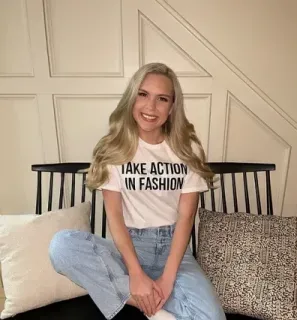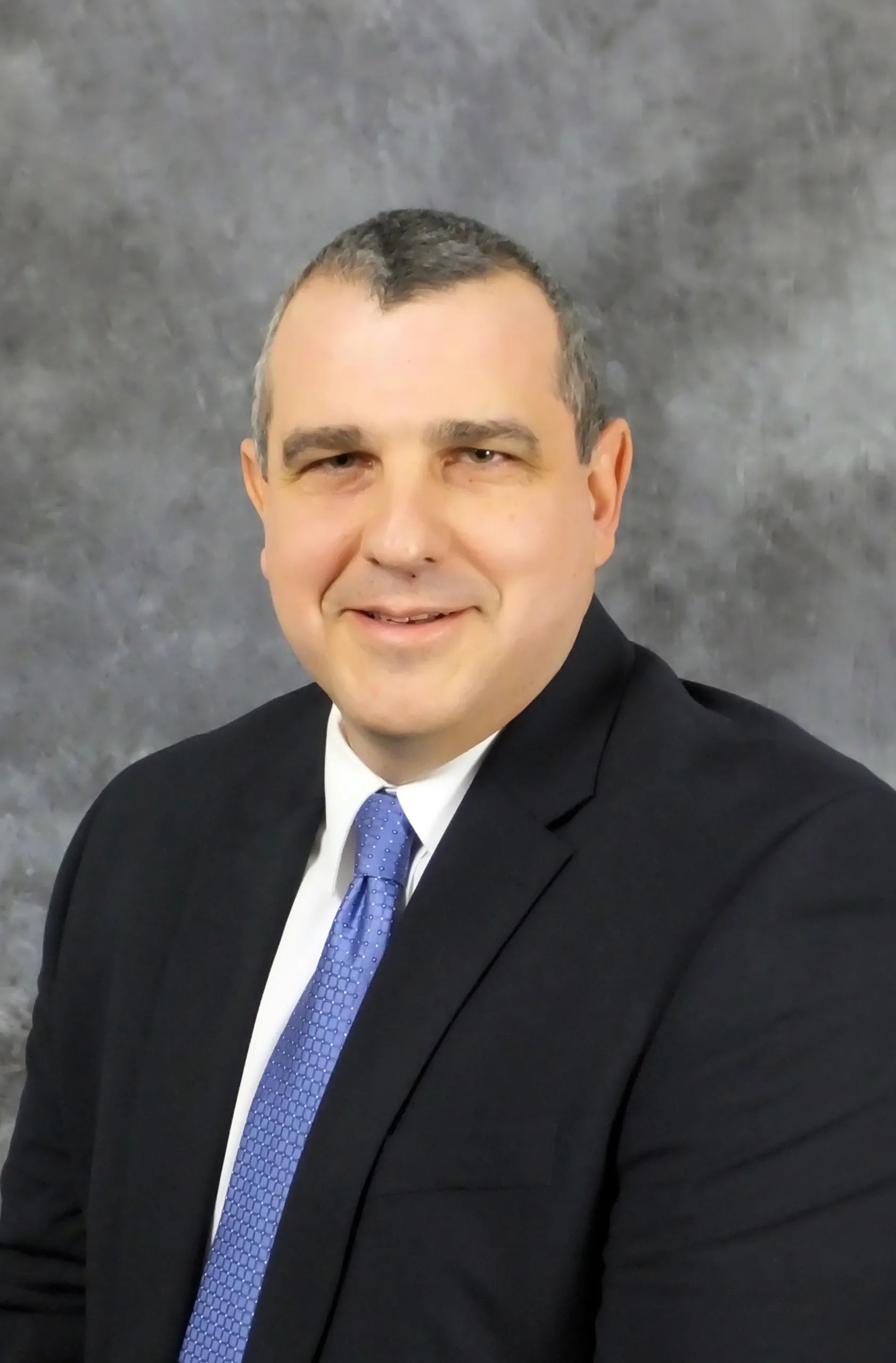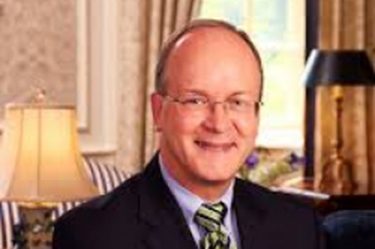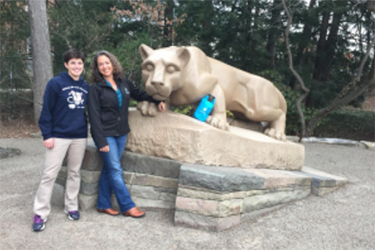Miss Pennsylvania Miranda Moore, Sustainable Fashion Advocate and Environmental Engineer
We recently sat down with current Miss Pennsylvania Miranda Moore, a sustainable fashion advocate, environmental engineer, and graduate student at the University of Pennsylvania earning an executive certificate in social impact strategy. On April 17, Moore gave a talk at the University Park campus about fast fashion in conjunction with a clothing drive held by EcoReps. Later that evening, along with the Fashion Society of Penn State, she helped host a sustainability-themed fashion show featuring designs by students.
Moore founded Take Action in Fashion with a mission “to bring awareness to the environmental and social impacts of the fashion industry, and to provide people with the power and resources to make a difference.” These include a free, 60-page Sustainable Fashion Education Toolkit, which provides “not only resources related to sustainable fashion, but even more dedicated to other social issues with strong intersectionality—such as child labor, women’s empowerment, and economic inequality.”
This conversation has been edited for length and clarity.
What was the “lightbulb” moment when you realized you wanted to focus on using your platform to advocate for sustainable fashion?
My lightbulb moment happened about five years prior to when I began to compete [in pageants]. During my freshman year of college, I took a sustainability class and learned about the impacts of the fashion industry, which is one of the highest polluting and most dangerous industries. I have a lot of clothing, and up until that point I hadn’t really thought about shopping sustainably or about the clothing industry being part of sustainability. I considered myself to be a sustainability advocate and an environmentalist, so the fact that I had a closet full of clothing from fast fashion companies was very jarring to me—that I had been contributing to a problem without knowing it was a problem.
When I started competing and was creating a platform—what we now call a community service initiative, I put a lot of thought into creating something that I would not only be able to advocate for, but that also would be a positive change that people could be part of. Within the pageant world, we consume so much clothing and our target demographic as an organization is women ages 18 to 28. They are pretty much the highest consumers of fashion and of clothing, so I thought, “What a way to combine those demographics and this passion.”
What has it been like for you to bring a sustainability focus to the Miss America organization? Is your approach a new thought for many?
This is a new thought for a lot of people, and—again—me included. The very first time I bought my fanciest evening gown, I wore it multiple times. So many people were surprised to see me in the same gown repeatedly. I won Miss Lancaster in it, won Miss Central Pennsylvania in it, and competed at Miss Pennsylvania in it. People were shocked that I wore the same gown to compete again. So that was another lightbulb moment for me because I saw that this is such a truly foreign concept within the pageant industry. It’s so deeply rooted into what pageantry is that you can’t be seen in, compete in, or be in a photo in the same outfit multiple times. It is unfortunate that that’s the sort of framework and mindset we’ve created.
During this year, I have worn things many times, and been seen in the same things repeatedly. I’ve rented a lot of things, as well, to integrate new pieces into my wardrobe, or purchased pieces secondhand. I have created a sort of brand that says, “You will see me in the same thing multiple times because not only is it reasonable—just wearing my clothing, but I’ve also built my platform on this.”
I interviewed in the same cocktail dress for Miss Pennsylvania as I did at Miss America, and I talked about being an outfit repeater, and about how I was probably the only woman there who didn’t buy something new for that one occasion. That’s not to say it’s not OK to do that—I certainly buy new clothing sometimes. I think there’s no way around that. But it was more of a statement that my Miss America interview isn’t going to be less valuable or important because I’m wearing something I’ve worn before.
If you choose to buy something new, great. But you don’t have to. It’s a new concept in pageantry, but once people hear it, it’s a quick mindset shift. I’ve seen multiple women this season re-wearing things, especially within our state. I’ve had girls come up to me and say, “I’m re-wearing this, and I don’t feel badly about it.” And I’ve also had nationwide title holders reach out to me with similar sentiments about re-wearing their clothing. It’s been something that has reached people, so I’m very grateful for that.
There can be a lot of assumed privilege in much of the messaging about how to have a sustainable wardrobe, from touting fabrics that are more expensive than many people can afford, to encouraging secondhand purchasing when that can be hard for people in certain bodies, given the narrower scope of sizes available secondhand. What would you say to people who have a hard time making “sustainable” clothing choices because of access limitations, such as students?
Well, I think that you don’t need to constantly be buying something new, you can wear something you already have. I’m currently selling a lot of my wardrobe from this past year because I’m entering a new era of my life in a couple of months, and I won’t be wearing gowns and cocktail dresses quite as much as I have been during my year of service. So, I think that that’s an interesting concept, too: it’s cradle to grave, and I’m sort of coming to the grave portion of my pageantry and my wardrobe. Choosing what I can do to make sure I’m still upholding my values has been an interesting part of the transition.
We tend to overconsume in general, so when people say to me, “I can’t buy new things at a low price point,” I think the question is, “Do you need new things?” That’s always my first conversation. It is expensive to buy clothing, and it’s extremely expensive in a lot of cases to buy ethically made or sourced clothing. But do we need more clothing is question number one. And if you need or want something new, it can be new to you, since you can buy it secondhand.
With limitations regarding available sizing in secondhand clothing, I think that that’s a clothing industry issue more than it’s a secondhand issue. The clothing industry has limited access to sizing, so there is a trickledown effect, and of course there’s not going to be as much clothing in secondhand stores if it’s not even being produced for people of particular body types. So I think that that’s a larger-scale issue than a sustainability issue.
I love the quote: “If you aren’t paying the price for your clothing, something or someone else is.” There really is no such thing as cheap clothing, because if you’re buying from fast fashion, it’s negatively impacting those garment workers and the environment. So, you might not be paying for your clothing, but they are.
It’s a tough question. I think economic access to sustainability comes from looking at what you need and trying to find it sustainably. If you can’t, then that’s when it becomes OK to buy something new. Maybe you’re in a time crunch, and you cannot find something that’s in your size and that’s appropriate for the occasion.
We’ve all bought new clothing. I don’t want people to believe my closet is 100% secondhand, because I can promise you it isn’t, and I will never claim it to be. It’s about trying. Sustainability is a balancing act. You don’t have to be perfect, but even if you’re conscious about it, you’re going to make such a big impact compared to if you’re not being cognizant about the decisions you’re making.
Take Action in Fashion offers a Sustainable Fashion Education Toolkit—a 60-page free download—on its website. This is an incredible resource that brings together so many aspects of sustainability—environmental justice, women’s empowerment, labor issues—as in the framework of the UN Sustainable Development Goals (SDGs). Tell us how that document came about. How do you envision it being used, ideally?
One of the hard parts about talking about this issue in schools is that there’s an age group in which sustainable fashion isn’t as relevant. Sustainability might be relevant, and fashion might be relevant, but bringing up garment workers gets to be a bit too much for young kids. So I thought, “What if there was a way to teach younger kids about sustainability and tie it into fashion, but not make it a conversation that isn’t age appropriate?” You have to be careful, especially when you’re going into schools, to make sure what you’re talking about is appropriate for the audience and the information will be received the way you intended.
So that was where the toolkit came about. I thought that if I took apart the intersectional issues that are part of sustainable fashion, and even if I only taught a group of people about one of them, I could help them do further research and have more conversations if they’re interested. So I always give teachers the toolkit. I think of it as being a legacy project, so that when I go into schools, the conversation doesn’t stop when I walk out the door.
In the process of getting the program accredited by STEM.org, I had to show what kind of things I would teach in classrooms: the mission behind it and the educational and curriculum goals. It’s a very thorough process to get a program accredited, so that taught me a lot about how I was going to approach going into schools and meeting those goals. I’m not an educator, I’m an engineer. So I was very grateful to that process for teaching me a lot about what I did not know.
The toolkit has probably become the most valuable resource I have for educators. It’s useful for K-12, and for college students, as well. It has become my main form of communicating with educators and providing resources on sustainable fashion. I intend to keep it a living and breathing document, and I love sharing documentaries, books and further resources that allow the conversation to continue.
In your efforts to highlight women’s empowerment, do you encounter anyone challenging the pageant model?
Over the course of my year, I have accepted that people will always expect something. I will never be what everyone expects, and rarely what anyone expects. Once you get somewhere and you speak, you never know how people will take the information you share, and I consider it such a huge privilege to get to change people’s minds about what Miss Pennsylvania is and what pageantry is. I love telling people that it’s a full-time job, because it is. I love telling people that I’ve worked in construction as an engineer, and being Miss Pennsylvania is harder. I had three years in industry and now I’ve had Miss Pennsylvania as a full-time job, and I can guarantee you I’ve worked longer hours and spent much more time outside of what’s considered my work hours doing additional work. We are constantly creating documents and presentations, preparing speeches, and working with sponsors.
I also have the responsibility of bringing in the next class of competitors for Miss Pennsylvania, so I’m always working on investing in them: giving them the skills they need to be able to step into this role. It’s a very multifaceted job, including numerous things outside of what is considered the public-facing part. So I do think there are a lot of misconceptions, not only about what Miss Pennsylvania is, but also about the woman who is Miss Pennsylvania.
When I won, all the newspapers and the articles were not titled “Miranda Moore is Miss Pennsylvania,” but rather, “An environmental engineer is Miss Pennsylvania.” That was what was jarring to people: that I was a certified engineer and certified sustainability professional, and I was taking a year off from what people would consider to be a very serious career for what they considered to be not a serious career as Miss Pennsylvania. I never felt that way at all. I considered it to be a steppingstone in my career, and such a great part of my journey and my path.
To get to dismantle that misconception has been very rewarding. But I’m about 10 months into the job, and I still walk into different conferences and meetings and can tell that people are confused about why I’m there, or they expect that I’m not going to know what I’m talking about—especially in professional environments. To get to share that I have worked within this industry, that I do have all this experience, and that I’m currently in graduate school [at the University of Pennsylvania], I think people are really taken aback by it. But I consider it to be a privilege and very rewarding to get to change people’s minds.
To kind of dismantle what it means to be an engineer, and then to be the Miss Pennsylvania who’s an engineer and get to dismantle what it means to be Miss Pennsylvania—I’ve gotten to do both with high heels and a hot pink hard hat. You don’t have to compromise either to be good at both, and I hope that I’ve been able to prove that in both industries.
It’s great that you’re going to so many schools, because students may have only seen limited versions of who or what you must be to enter a certain field. Have you heard anything from them, specifically?
A lot of young girls will say things along the lines of, “I didn’t know girls could be engineers. I didn’t know princesses can like science.” And fortunately, we’ve had quite a few Miss Americas in the past few years who’ve resembled that, so we are sort of busting that stereotype on a national level. This has made it even more rewarding every time I go into a school and a person asks who won Miss America, and I get to say that Miss Colorado won, and she’s our first active-duty military member to become Miss America. It’s powerful that they not only get to see this from Miss Pennsylvania who’s in their classroom, but they get to hear about other women who are title holders, so they don’t only have one role model, but hopefully they have tons. That’s what the Miss America opportunity is all about: showcasing women in many different ways. So, it is cool to get to tie in other women who are breaking stereotypes in their own way, as well.






